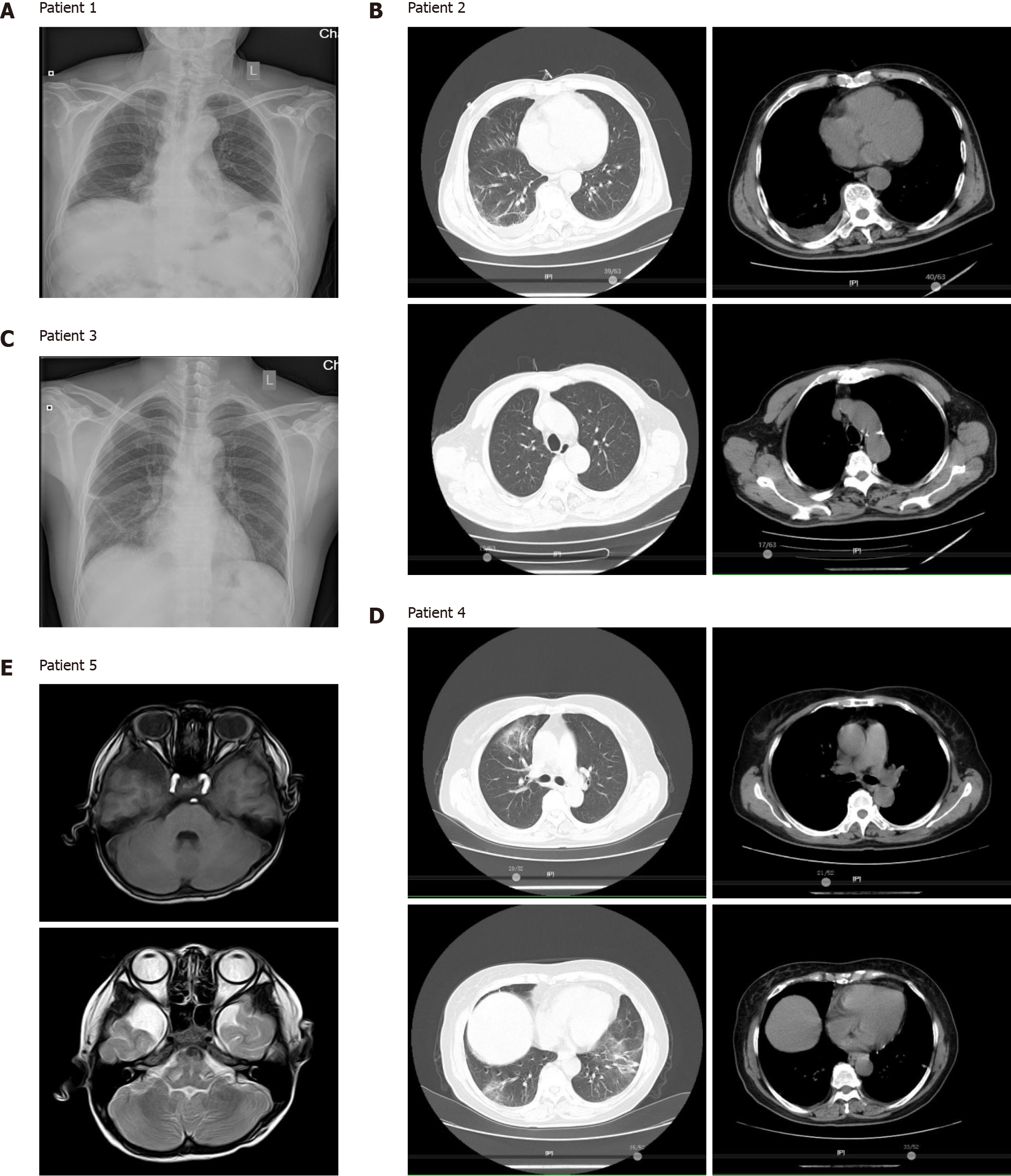Copyright
©The Author(s) 2021.
World J Clin Cases. Sep 16, 2021; 9(26): 7693-7703
Published online Sep 16, 2021. doi: 10.12998/wjcc.v9.i26.7693
Published online Sep 16, 2021. doi: 10.12998/wjcc.v9.i26.7693
Figure 1 Chest and brain imaging of patients at diagnosis.
A: Chest computed tomography (CT) images of patient 1, the red arrows indicate changes of chronic bronchitis emphysema in both lungs, the right lower lung space, a thickened left pleura, and splenomegaly; B: Chest CT images of patient 2, the red arrows indicate inflammation of the right lung, bilateral pleural effusion fluid buildup, and small nodules in the lower left lobe; C: Chest CT images of patient 3, the red arrows indicate right lung inflammation with pleural effusion fluid buildup; D: Chest CT images of patient 4, the red arrows indicate air-space consolidation in the upper and lower lobes of the right lung, small nodules in the right lower lobe, and effusion fluid buildup in the left thoracic cavity and between the lobes; E: Brain magnetic resonance imaging images of patient 5, the red arrows indicate an arachnoid cyst in the right temporal lobe.
Figure 2 Chest and brain imaging showed lesion absorption following anti-Chlamydia treatment in patients.
A: Chest X-ray image of patient 1; B: Chest computed tomography (CT) images of patient 2; C: Chest X-ray image of patient 3; D: Chest CT images of patient 4; E: Brain magnetic resonance imaging image of patient 5. All patients experienced complete recovery after treatment with anti-Chlamydia antibiotics.
- Citation: Yin XW, Mao ZD, Zhang Q, Ou QX, Liu J, Shao Y, Liu ZG. Clinical metagenomic sequencing for rapid diagnosis of pneumonia and meningitis caused by Chlamydia psittaci. World J Clin Cases 2021; 9(26): 7693-7703
- URL: https://www.wjgnet.com/2307-8960/full/v9/i26/7693.htm
- DOI: https://dx.doi.org/10.12998/wjcc.v9.i26.7693














